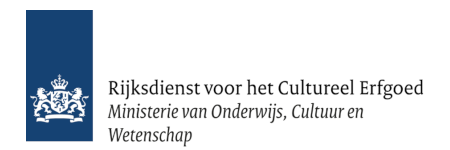SOP Spectral Library
An exhaustive collection of Raman spectra obtained on synthetic organic pigments
SOPs have been widely applied in modern and contemporary painting and are also used extensively in conservation-restoration practice. Nevertheless, historic and scientific interest in the history and characteristics of SOPs has been very limited. While SOPs have already 150 years of history, in which hundreds of different SOPs have been synthesized, these pigments are understudied in comparison to the more classic ranges of natural minerals and synthetic inorganic pigments. Still little is known about the history of SOPs including their stability and degradation characteristics and interaction with the paint binder.
The importance of thorough knowledge on the use of SOPs is of high importance. SOPs are found not only in paintings and sculptures, but also in a wide variety of contemporary forms of art (e.g. plastics). Organic compounds generally are more prone to degradation, but there is hardly any information available on the stability in relation to the matrix in which they are captured. Information on the history of these pigments is scarce and scattered, yet it is of uttermost importance to know which have been used, and since when. Not only to comprehend stability issues and the fading of colours in art objects, but also for research in art-history and for authentication issues: characterisation with analytical instrumentation, combined with known usage history of a SOP, allows post-quem dating, a date before which the art object studied cannot have been made.
A number of research groups are working on different aspects of documenting SOPs, but the results of their research are scattered and some research is unnecessarily being repeated. Since late 2014 a group of European researchers working on SOPs and authentication form an informal SOP expert workgroup, who met in Munich, Dresden and Brussels. SOPRANO deepens the existing informal SOP workgroup and provides sustainability to it.
The expert network assembles researchers from different disciplines and working on various aspects of SOP documentation. The partners belong to the most prominent European heritage science institutions.






Wim Fremout
Coordinator
Royal Institute for Cultural Heritage (KIK/IRPA)
Paintings Laboratory
Jubelpark 1
1000 Brussels
Belgium
w...@kikirpa.be (unhide)
+32 2 739 68 46
SOP Spectral Library
An exhaustive collection of Raman spectra obtained on synthetic organic pigments